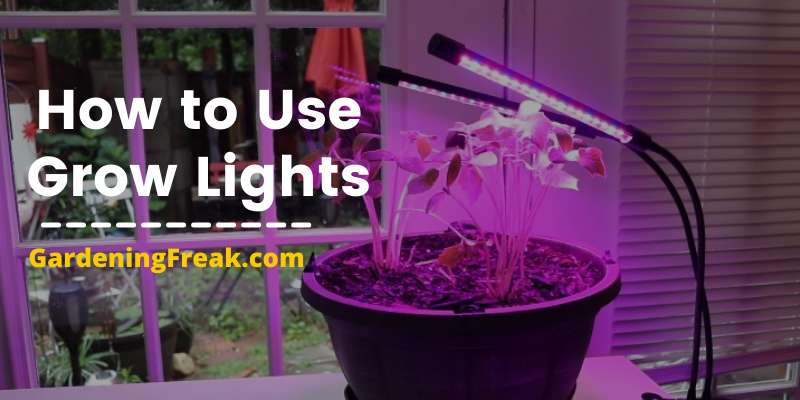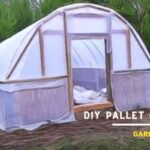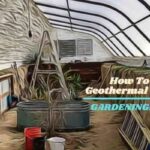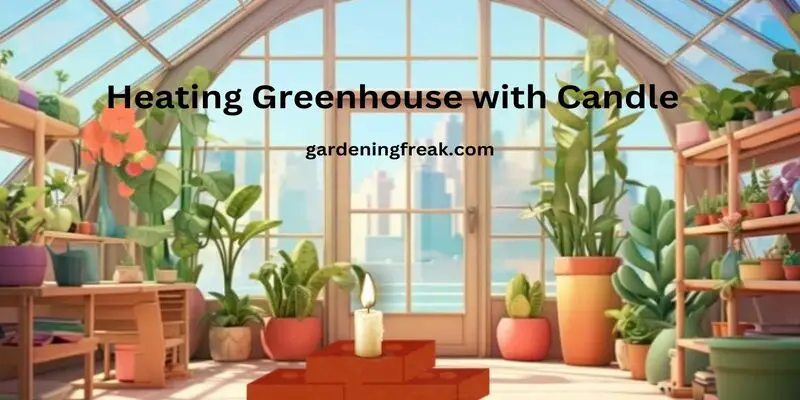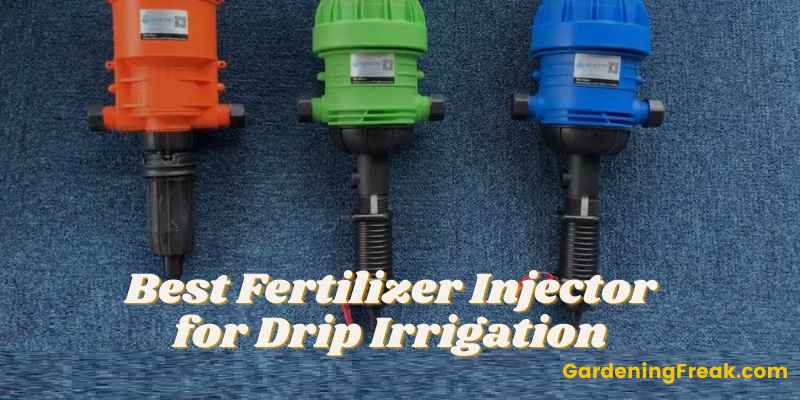Are you interested in indoor growing but don’t know how to use grow lights? Don’t worry about the technicalities. It’s quite easy, as long as you carefully read this article. Back in the days, people used to grow whatever they want in their back yard. It’s because they had ample space and the sun to deliver limitless energy. But now it’s kind of impossible to think of gardening in tight apartment spaces. In this dire situation, indoor growing is your only salvation. In this article, we will discuss various aspects of grow lights and how to use them properly. You will also find how each type of light impact growing along with FAQs about grow lights in the end.
Without further ado let’s get started.
How to Use Grow Lights
If you have made your mind to use grow light for your plants or even if you are just interested in glow lights, it would be a good idea to know the basics of how to use one.
The main purpose of using grow light
Generally, people turn to grow light for a few reasons. Such as-
- Growing sensitive plants.
- For proper space utilization.
- Lack of outdoor garden space.
- Expending exiting garden real state.
- Save plants from winter or harsh weather.
- Growing plants in a controlled environment.
- Outdoor garden deprived of adequate sunlight.
Apart from these, there are many users-preferred reasons to use grow lights for plants. Individuals who live in urban cities and apartments hardly have space for gardening. The UV rays from the grow light can be a great option to satisfy your plant’s needs and maintain a healthy lifespan indoor.
Step by Step guideline of the total process :
But there is a catch. You can’t just set up some lights and expect strong and healthy growth. That’s not how it works. Depending on the plant types and the stage they are in, light intensity varies. The duration of light projection also needs managing,as you pass each stage of growth.
Here is a step by step guide on how to use grow lights for your indoor growing projects from the beginning.
What you will need
- Seeds or baby plants.
- Plant soil.
- Small pots or special trays for plants.
- Grow lights/bulbs/LEDs.
- Light hanging equipment.
When you have everything you need, time to get started.
Setting up seeds or plants tray and pots
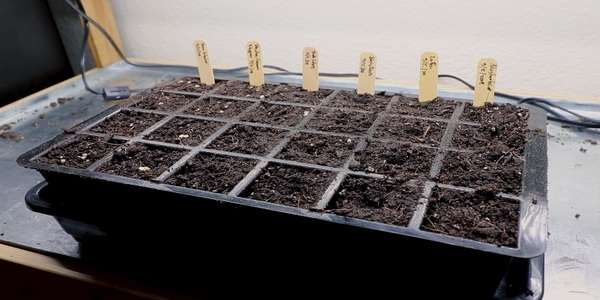
First, allocate space for your plants. You can either choose small pots for each plant or a special tray if you are using seed. It’s not compulsory to use trays as small pots are still a good option for growing seeds. However, trays take less space and you can place more seeds on it for the next step.
Choosing proper grow light
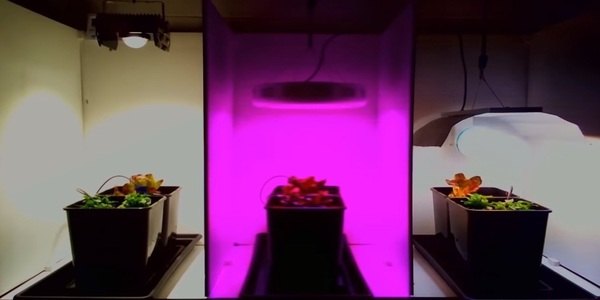
As we said earlier grow lights have a different wavelength, you need to be sure which light setup you are going to implement. For example, rose bushes and ferns are much tougher plants that flourish under high-density lights. On the other hand, poppies, peonies, and succulents get huge benefits from high-density lights.
Also keep in mind that some plants love different shades of red, blue, and white light.You can easily find on the internet what shade of light is suitable for your plant.
Setting up Equipment
After you have your plants and lights ready, take your time to bring all the parts together. What I mean is placing pots on your preferred location. You can put a few plants on the shelf or a single plant on a countertop. The plant arrangement will advise the lighting setups.
How you would like to install your lights is also relies on your preference. Here is your chance to get creative and give it a stylish look in the process. Just make sure the proximity and light angle is proper for adequate exposure. Placing too close to the plants will do more harm than good.
Maintaining Plant Health

Even if you have selected the perfect plant and lighting system, leaving thing as they are not going help in maintaining plant health. In times, the soil will bedry and may need to clear out weeds around the plant. Take care of the water need of the plant regularly and make a drain for excess water. A few small holes under the pot will do the trick. Also, use a plate underneath the pot to hold leftover water so it won’t stain your countertop.
Readjusting Lights
After a while,your plants may need more intense lights or totally different kinds of light as they grow. Keep an eye on that and make necessary changes.
How to Grow Light Works
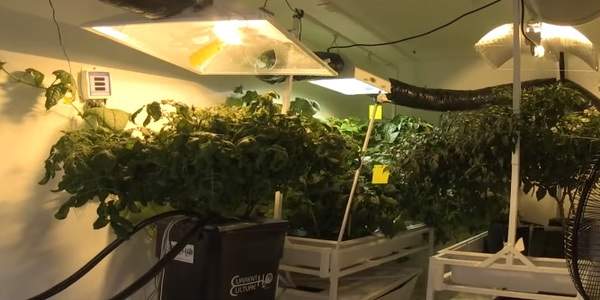
Do you ever wonder how plants manage their nutrients for surviving? For us humans, we gather food from nature while animals hunt and scavenge from our surroundings.
But, what about trees and plants?
To find out the answer of the above question and to know more detail about how to grow light works its important to discuss two things 1. How plant processes their food in nature and 2. In which way plants process their food under grow light.
How plant processes their food in natural sunlight :

We know plants have roots that spread throughout the ground to collect water and minerals. As much as this appears, a lot is going on in the backend. Plants cook their own food through photosynthesis. With the help of sunlight and chlorophyll on the leaves they produce sugar and other rich organic compounds. They also absorb carbon dioxide and release oxygen as a byproduct of the process.
How plant processes their food under grow light
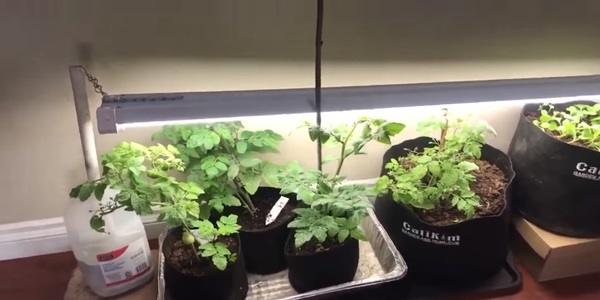
When you are growing plants indoors, it’s not always possible to make way for sunlight to enter. And it’s also impossible to shine for 18 hours straight that some plants need. Here grow light does exactly that and much more.Grow light can produce a different light wavelength that helps in the various growth stage of the plant. Like, the spectrum from the blue end benefits foliage growth. Fruiting and flowering plants thrive well under the red end of the spectrum. The full spectrum of the grow light mimics the wavelength of the sun for conducting photosynthesis indoor and helps plant to process their food. That’s genius, right?
How to Install Grow Lights
Installing grow lights are not that complex neither requires any special skills. But you need to understand the procedure to get the best out of it. Follow these steps to get started.
Choosing Light Types and Quantity
Which grow light is perfect and how many do you need is greatly varies on the plant you are using. 30 watts-per-square-feet is enough for the most plant. But some edible plants may require over 40.
If you know how much watts-per-square-feet your plant needs, you can easily calculate the number of bulbs required.
(Square feet of your grow area × Watts you need) ÷ Watts your bulb has = Bulbs require.
Light mounting
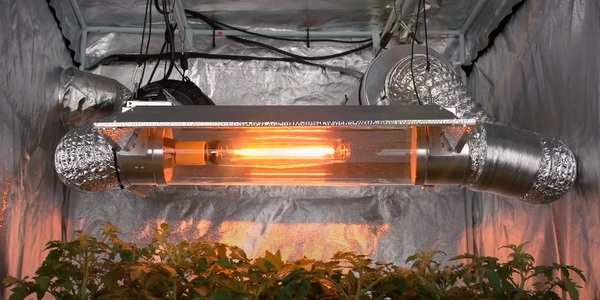
After you know the number of bulbs, you need to set a contraption for light mounting. For a single bulb,the gooseneck holder comes super handy as it’s easy to position and adjust the height. But in the case of multiple bulbs, you need the help of a rack that can hold that many bulbs.
You can also find whole light set in the market including all the necessary mounting equipment. The adjustment lever or chain lets to place the lights at your desired height.
Add Necessary Attachments
There are many attachments you can add to enhance your bulb performance. Like spectrum filter, Timer, reflectors, ventilation system. A timer helps with maintaining the proper duration of exposure. And ventilation is for dissipating excess heat.
Best Time to Run Grow Lights
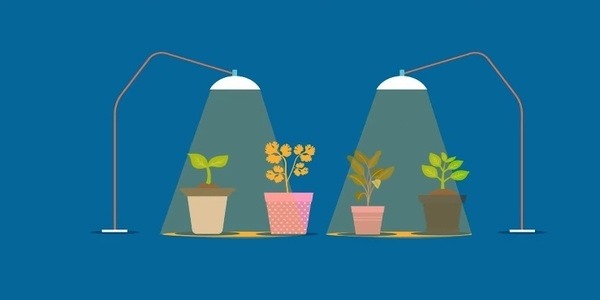
Plants need the sun to make their food through photosynthesis. Depending on the geography the light from the sun extends 6 to 8 hours. That’s enough for most of the plants. But when you’re growing indoor, the artificial light exposure increases almost up to double in hours. It’s because the grow lights are usually less potent than our giant sun. For healthy growth, it is also important to leave the plant in darkness about 6 hours or so.That said, it’s up to you and your plant type that determines the running time. Never leave your plants under grow lights 24/7.
How far should LED grow lights be from plants
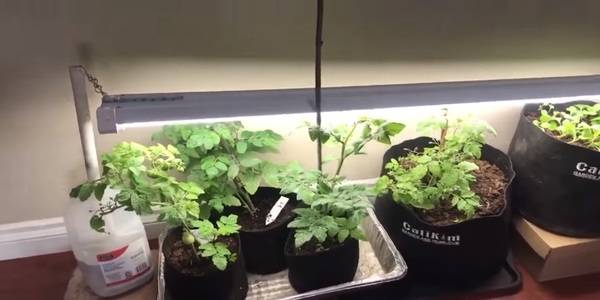
As we mentioned earlier indoor plants require more lights than outdoor plants. The light projection time can be between 12- 18 hours subject to vary on the plant category. The same goes for intensity. In the beginning, you may get by placing the light far as seed germination and baby seeds don’t require much exposure. As the plants grow old, they need more lights to do photosynthesis.You can achieve that by minimizing the gap between plant and light.LED grow lights are the most common and popular among the indoor gardener. It’s highly efficient and effective for reaching the full spectrum. In some cases, they are cheap too. Below is a rough calculation of how far your LED grow light should be from a plant.
| Growth Stage / Plant type | Light Recommended | Brand Name |
| Germination | In this stage, the seed lies under the soil and slowly move to warmth/lights. Constant light is recommended for atlist 7-8 hours | In this stage, the LED light can be 24-30 inches far from the plant. |
| Seedling | After poking through the soil, the seedlings start to expand their leaves and be ready for photosynthesis. 10-12 hours light is recommended | Here 18-24 inch is an ideal distance |
| Vegetative | This is the stage where plants start to grow at full speed. You need more light to meet demands.12-14 hours recommended | 12-18 inch distance from the plant will do well for proper growth. |
| Bloom | The plant is fully grown. For adult plants, you need adequate light exposure so the blooming stage receives ample light for fruits and vegetables to be proper. The lighting hours vary from plant to plant | Vary from Plant to Plant |
| Succulent and cactus | Grow light always work best for indoor cactus and succulents | 18–24inch distance is recommended |
Types of Grow Lights for Indoor Plants
Here are the various types of Grow light home gardener use on indoor plants.
Incandescent Lights
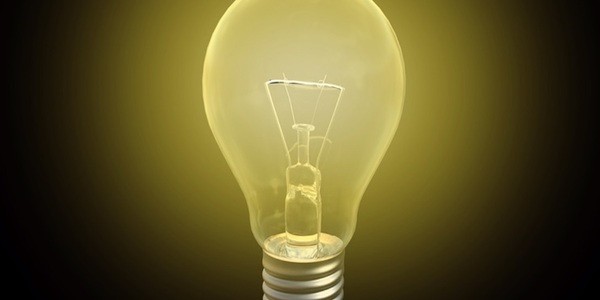
These are old lighting technology you may have seen in lamps and other household bulbs. The bulbs have a red hue to it and produce heat in the process. For some plants, you can use incandescent but it’s not very efficient compared to other bulb types.
Fluorescent Lights
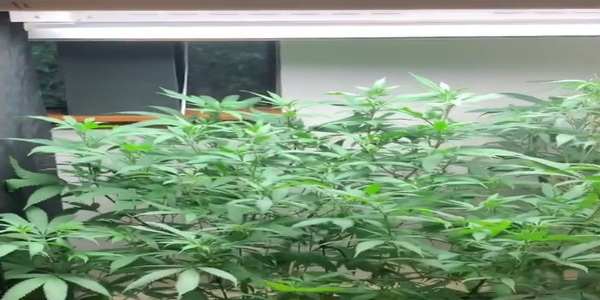
Florescent is most common and relatively efficient than incandescent light bulbs. Their wavelength can vary from blue to full spectrum. Another good this is its much cooler hence you can use it much closer to your plant without burning them out. Great for vegetables and baby seeds.
HID grow Lights
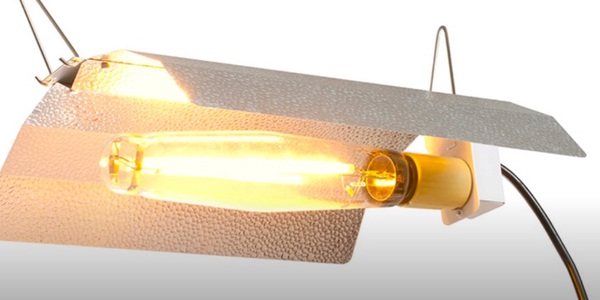
If you need heavy-duty to grow lights for large growing project HID lights are perfect for the task. HID stands for High-Intensity-Discharge light. The technology is so sophisticated, it uses electricity and gas to discharge high intense rays.
There are three types of HID light.
- Metal Halide or MH.
- High-Pressure Sodium or HPS.
- Dual Arch, Combination of both MH and HPS.
MH lights do well in foliage and healthy plant growth. On the other hand,HPS is better suited for vegetables, fruits, and various flowers. The Dual Arch comes with the benefits of both MH and HPS.
LED grow Lights

Among the all growing lights, LEDs are the most efficient and in a way cheaper. They are available in various light spectrumsand can give you greater results atmuch lower operational cost. LEDs are suitable for most types of plants without any issue.
Frequently Asked Questions about Grow Lights
Q1.What type of grow light for vegetables?
Any bulb/LED that gives off light from the red spectrum is usually great for vegetables.
Q2.Can plants photosynthesize with LED light?
Yes. LEDs along with other artificial lights are suitable for photosynthesizing indoor.
Q3.Can you leave grow lights on 24 hours a day?
No. it’s not advisable to leave your grow lights on for a whole day. Plants need at least 6 hours of darkness in 24 hours.
Q4.Can a regular light bulb help plants grow?
Yes. But it truly depends on the plant type. Some plant doesn’t need that much light, so you are good with a regular light bulb. But in some cases, a regular bulb just can’t cut the plant’s demand.
Final Thoughts
Knowing how to use grow lights is very important for indoor growing. Growing lights are the only alternative to the sun assuming you don’t have the time and money to build a greenhouse. We hope you have found the necessary information about the grow lights and how to use them properly.That said, wish you good luck on your next growing project. And if you are planning to purchase any new grow light for your indoor garden you can check our top grow light list from here.

